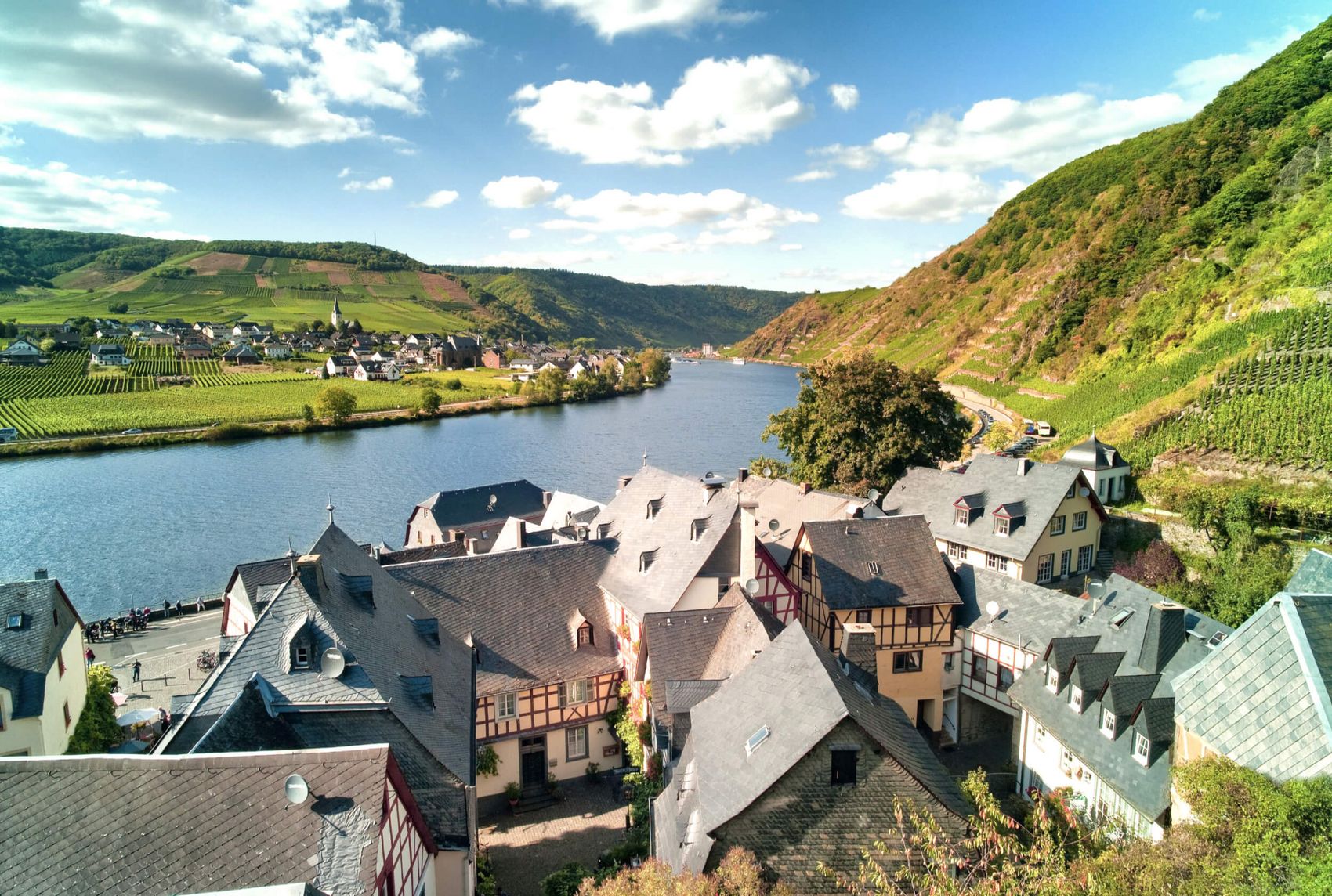Fancy a hike?
Stroll between picturesque house facades early in the morning: Cheerful sparrows twitter as they hop along the cobblestones. In the old wine villages with the steep undercut slopes on the banks of the Mosel as a backdrop, people have always lived in close proximity to one another. Here, where space is at a premium, people build upwards, which is why you see beautiful half-timbered houses towering above the narrow streets. Small open spaces open up. Those who can, tend small gardens and allow vines to grow up the sides of the walls. The rows of houses line the streets and alleyways which run either parallel along the Mosel or lead directly to the vineyards.





